
We talked to a parent, student and former trustee and asked them to share their life experiences during the past two years of a pandemic. Here are their stories.
Amy Johnson, former West Ada school board trustee
Early last year, Amy Johnson’s husband had a plan.
If protestors stood outside their home — just like they had recently at other Idaho elected officials’ homes — turn on the sprinklers and pull out the strobe lights, hoping to keep them off the front porch.
Johnson, who had just assumed the role of West Ada School District’s board chair, was flattered that her husband would go through such an effort. But reflecting on the fact that he had to go through such lengths for her public service troubled her. Not just about the backlash she might face, but also about how exceedingly normal it was to see targeted vitriol against elected officials.
This February, Johnson resigned. Her two-page resignation letter cited her exhaustion and threats and harassment targeted at her children and employer.
Johnson remembers looking out on a sea of hundreds of people donning yellow t-shirts. A little more than half-way through her year as board chair, Johnson and the board were facing a massive public showing about masks. Later at that Aug. 24 meeting, the board voted 3-2 to let parents opt out of its mask requirement, effectively making masks optional. Johnson voted for the opt out.
A man approached the board’s desk after the meeting, thanking new superintendent Dererk Bub for his service and lambasting Johnson for hers.
“You are a vile woman,” Johnson remembers him saying.
She replied, “You’re a vile human for even thinking you could come up and say that.”
Police then escorted the man away, Johnson said.
An Eagle parent who ran an anti-mask group, David Binnetti, filed a formal complaint against Johnson with the board, arguing that her employment by the insurer Blue Cross of Idaho presented a conflict of interest when voting on pandemic protocols. Official replies by the board, not including Johnson, and the Idaho Attorney General’s Office swiftly dismissed the notion of a conflict of interest.
Binnetti’s interpretation “would present every board member with any level of knowledge or expertise on any issue from voting on a matter for which they have knowledge or expertise,” the board’s response read.
Johnson said her family could withstand the threats and harassment that she received referencing them, but she also worried how long they could withstand it. But her employer’s entanglement in critiques over her public service felt unfair, she said. The insurer didn’t choose to get involved in this public discourse, she said. It was Johnson’s choice.
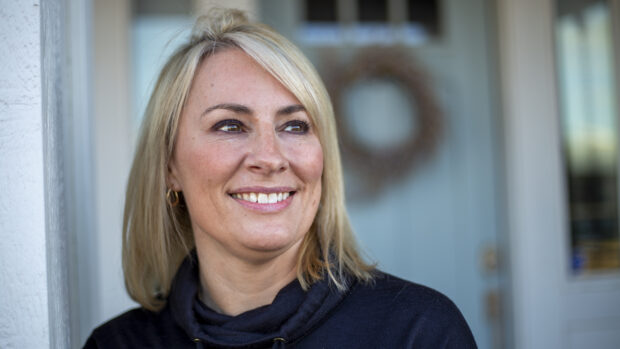
“They were getting drug into a story that wasn’t theirs,” Johnson said. “It wasn’t theirs, and it wasn’t accurate. And it frankly wasn’t right.”
After she felt that she had accomplished what she set out to on the school board, she felt free to resign. She felt like it was her job to stop the threats and harassment of her family and employer. But she also saw resignation as a way to speak out about what she endured, letting other Idahoans ask if the backlash she received reflected true Idaho values.
“If we let a small minority of people change our values, we’ll change the state in a way that we don’t want,” Johnson said.
Today, Johnson is working with Rep. Greg Chaney, R-Caldwell, on a bill that addresses harassment and threats directed toward Idaho elected officials.
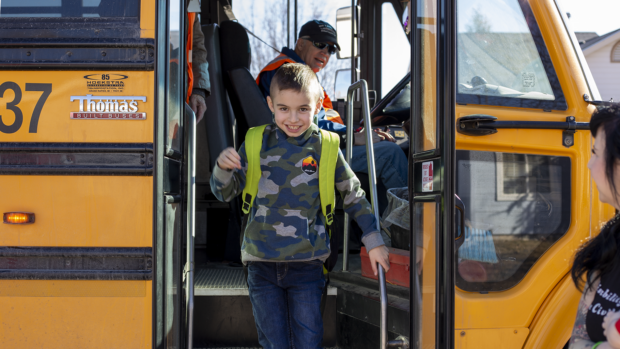
Bessie Yeley, mother of three
Bessie Yeley needed her eldest son, Sailor, in school.
In-person instruction was the only way his educators could meet the 9-year-old’s needs. But that same in-person care that her son with autism needed could also threaten his health, as maskless instructors and classmates potentially spread the virus in close quarters.
Yeley said the pandemic presented a bind for parents of children with developmental disabilities: Meet their instruction needs or reduce their risk of a severe case of COVID-19.
“It’s a balance between emotional health and physical health,” Yeley said.
People with developmental disabilities, including autism, may be more likely to suffer severe COVID-19, the Centers for Disease Control and Prevention says. That’s because of underlying health conditions, living in congregate settings or systematic health and social inequities. One study last March found that the COVID death rate in people with developmental disabilities was about eight times higher than the general population.
Sailor is non-verbal. That worries Yeley that he could not communicate COVID-19 symptoms if they developed.
But when Idaho schools and the Nampa School District, where her son attends, largely left schools open without mask requirements, including during the omicron surge, Yeley saw both realities of the bind play out.
She kept Sailor in school as much as she could — despite partial school shutdowns. But her son was left home for months early into the pandemic, as schools closed from a statewide order, and temporarily in later short shutdowns.
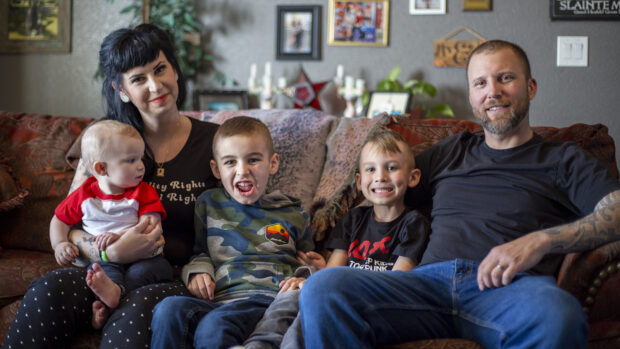
At the start of the pandemic, Yeley’s husband, Sean, stayed home for three weeks from his construction job to care for Sailor. As the lockdown stretched on, Yeley quit her job at the Idaho Department of Health and Welfare to stay home with Sailor.
No matter how hard Sailor tried, “he was on the floor” in a meltdown when learning from home. He couldn’t learn from a packet of take-home materials alone. His routine was “upside down,” Yeley said, and he was overwhelmed. “And there was nothing I could do about it,” she said.
“Just due to the severity of his disabilities, he’s not a person who could comprehend instruction on a tablet or sit still for instruction. He just doesn’t work well with technology,” Yeley said.
He paced around the house, back and forth, all day long.
“It wasn’t always equal,” Yeley said of access to virtual learning.
But the techniques that his educators in the classroom used to make education more accessible weren’t available at home. Yeley wasn’t a trained paraprofessional or special education teacher.
“He’s smart. He knows that his routine and his team was gone, and he may not have known when that was gonna come back. And I imagine that would be really hard for him and scary,” Yeley said.
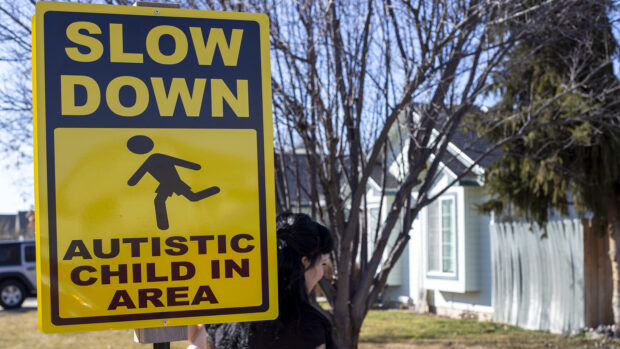
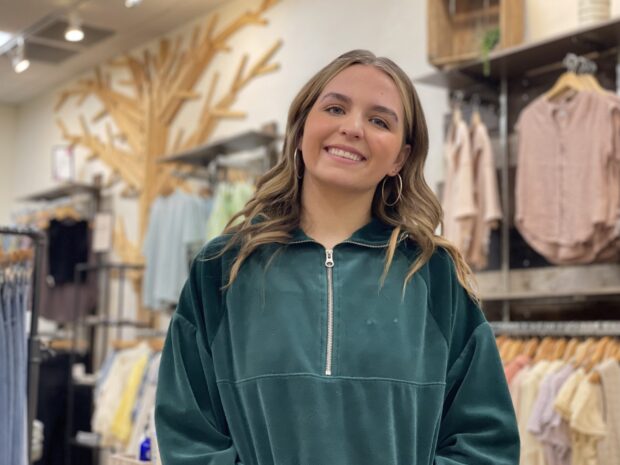
Ashtyn Oberhansly, high school senior
Ashtyn Oberhansly said goodbye to her friends before spring break in March of 2020.
She didn’t know that they wouldn’t return to school in-person until after the summer, or that the coronavirus would change her entire high school trajectory.
Oberhansly, now 18, was one of thousands of Bonnevile School District students whose in-person classes were called off from March to June of 2020, as coronavirus infections spread.
“I think I was kind of excited at the time,” she said of the unexpectedly long break her sophomore year.
After spring break, she and her friends navigated remote learning for months. Bonnevile then kicked off the 2020-21 school year with a partial in-person learning model.
Students returned, sort of. Learning was still nearly half online, and everyone wore masks at school.
It felt “different” for Oberhansly, who’s grades slipped amid the changeup. A mild heart condition made her parents uneasy about sending her to school during the lingering pandemic, so she switched full time to the districts’ online high school.
And she never went back.
Her grades improved, she said, but the big benefit came from being able to work a job full-time her senior year. Online gave her a chance to work full-time, and climb the ladder at work.
“I have a lot more money for college now,” she said, referencing her job managing a local clothing store.
Now a senior at Bonnevile’s Online High School, Oberhansly’s reflected on her upcoming graduation, and the pandemic’s impact on her educational path.
“I missed some events,” she said of the switch, “but I always kept to myself anyway, so it worked out for me.”
Idaho Education News reporter Devin Bodkin contributed to this story.
More reading: We’re reflecting on COVID-19 and its impacts two years into the pandemic. View our updated timeline of events here, and more about the impacts of the last two years here.
